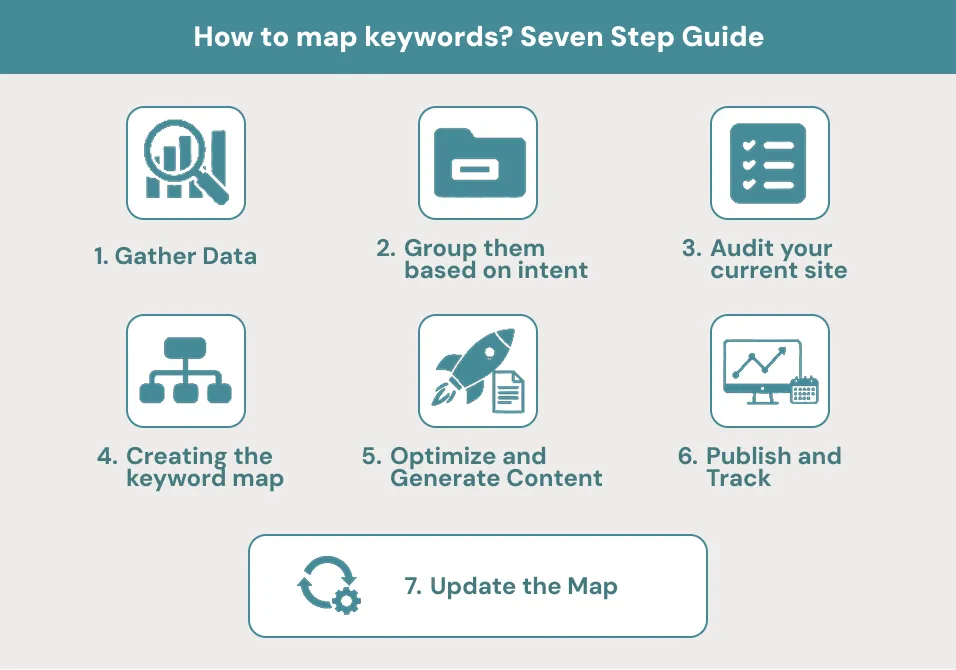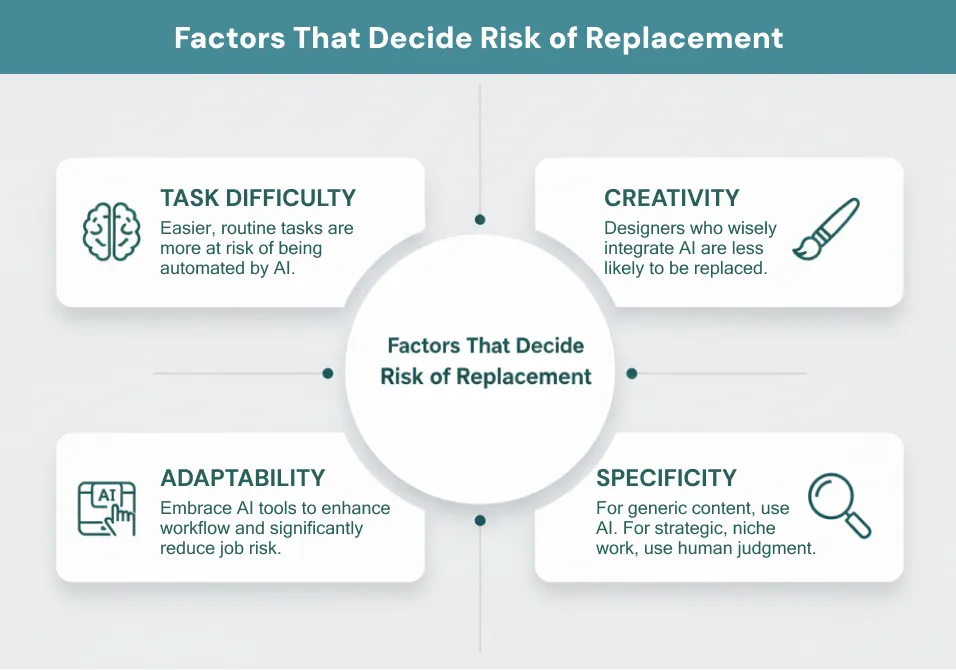- October 29, 2025
- Categories: Digital Marketing
What Is Keyword Mapping? A Step-by-Step Guide for Beginners
Have you ever wondered what SEO is really about? At a glance, it may seem like stuffing keywords and hoping for the best. Real SEO is much more than that. It’s about strategy. Knowing which words people use in their search queries. Not only that, but their placement as well. All this combined in one plan called keyword mapping. This plan can be complex. With the right tricks and tools it doesn’t have to be. A good plan works to help both visitors and the site. It guides the viewer to the right place. This simple guide will help you create the right SEO map. While also giving you information on the right keyword mapping tools, to get the job done.Studies show that SEO has a conversion rate of 2.4%, while paid content converts about 1.7%. This means seo is the future of sales. If your page has the right SEO mapping, the chances of your conversion almost doubles.This guide lays out a clear strategy. It shows one simple path to proper SEO mapping. Stop issues when pages fight for keyword terms. If you want your page to do well. This guide will help you get there. If you are not getting it, then you are leaving ranking and revenue on the table.
Mapping For SEO At A Glance
- SEO Keyword Mapping is the art of creating one key phrase, with its related terms.
- A plan is organized. This makes sure your pages don’t step on each other.
- Get SEO mapping tools or a spreadsheet, start from here.
- A map is made in six steps. Gather, group, choose, map, optimize and check.
- Keep checking the map for any overlaps.
What is Keyword Mapping?
At its core, it’s about giving each URL a unique identity. This is done by assigning them a keyword. This gives each page a clear job. You give each page a single keyword and smaller related supporting words. This makes sure your pages don’t overlap. Think of it as map,- Each keyword is a place
- Each page a vessel

- A keyword map provides that route which makes sure no ship crashes and reaches every place safely.
Why Keyword Mapping is so Crucial.
All communication is about intent. Google is no different. Search engines today reward clarity over stuffing. That’s why a clear map is crucial to get your voice heard. If your pages are not properly mapped. They may get cannibalized. Keyword cannibalization is the process in which a search engine gets confused and effort is lost. This is where a search term has no place and is wasted. A proper plan can prevent this. A good keyword does the following- Make sure that each keyword has its place. This prevents pages from fighting over the same spot.
- Direct searchers to the right place. Make sure they get what they are looking for.
- Google bots can be pesky. A map gives them clear paths to crawl on.
- Makes sense out of nonsense. Every site can be a jumble, but with a map, crawlers understand your hierarchy.
- Enhance conversions. Since visitors get their relevant site most often. They tend to convert more.
How to map keywords? Seven Step Guide.
Mapping keywords may sound complex. With the right knowledge however, it’s easy. Here is our guide to help you map keywords better. In seven simple steps.Step 1: Gather Data
Before you start mapping, you need to know places. Duh. So the first step is to gather keywords, tonnes of them. For this you need proper keyword mapping tools. There are other sources for them as well. Use;- Competitor Analysis: Check out what your rivals are ranking. You may find something useful.
- SERP Features: Lets you know what the audience needs. All this related info helps in getting the location right.
- Buyers Feedback: Customers feedback like reviews, comments etc. provide valuable insight into their world. Use their language to connect better.
- Seed Tools: Seed tools are your gateway to the right SEO strategy. SEMrush, Google Keyword Planner, Ahrefs, Ubersuggest are all great tools.

- Collect all of these in a spreadsheet. Label each in terms of volume, intent and difficulty. Classify each in terms of primary, secondary and supporting lists. This forms the database on which your strategy is based.Pro Tip: Never discard low volume long tailed words, mix them with high volume terms for best results.
Step 2: Group them based on intent
Intent is key. It is the basis of your entire scheme. The intent of the terms can be divided into following categories:- Informational- If it’s about learning something. Includes guides, blog posts, FAQs etc.
- Navigational- If they are looking for a site or service. About pages and brand resources.
- Transactional- If they are looking to buy something. Includes landing pages and product pages.
Step 3: Audit your current site.
Before moving on to creating new content. It’s crucial to audit what you have. Check for which pages are ranking. See if different pages target the same keyword. You may also have pages which serve no valuable keyword. Here is how you conduct a check.- Put your site through a crawling scan by screaming frog or sitebulb.
- Export URLs, title, H1 and ranking keywords.
- See which pages have no keywords and which one targets the same term.
Step 4: Creating the keyword map
This is where everything comes together. All your research was to assign keywords to your pages. You can either use a spreadsheet or a tool to do this.Spreadsheet Method:
You can use a spreadsheet to group your keywords and terms in their place.- Column 1: URL
- Column 2: Primary Keyword
- Column 3: Secondary Keywords
- Column 4: Intent
- Column 5: Volume
- Column 6: Type

Tools:
Use tools like SEMrush, SEOmonitor or ClusterAI to create clusters of terms and assign them to relevant pages. This eases manual work. To get best SEO results, read more at Best WordPress SEO Plugin for Maximum Results.Step 5: Optimize and Generate Content
Once the mapping is complete. You can optimise to gain the most benefit.- Use primary keywords in titles, first headings and descriptions
- Use secondary keywords and supporting terms in the body
- Your content should be easily understood. Keep readability at 13 year old level.
- Add internal links. Optimise them to make sure pages don’t compete for the same term.
Step 6: Publish and Track
A SEO mapping scheme is as good as its results. Once you have your SEO keyword mapping scheme ready, it’s time to test it. Use analytics to find which pages and terms are getting the clicks. Look for these metrics:Metrics:
- Ranking: A very important metric. It tells if the pages are getting ahead for their given keywords.
- Bounce Rate: This tells if the visitors stay on your site or not.
- Click-through rate: This is the number of clicks attracted by your site. Shows efficiency of your strategy
- Conversions: Conversions are the leads turning into sales. This is the best metric to judge a term mapping scheme.
Step 7: Update the Map
Now that you have a working map, it’s not the end of your journey. The algorithms are constantly updated. The search engines constantly evolve intent. New competitors also enter the market.As a result you must update your scheme at least quarterly. Always update your keyword database. Be on the lookout for updated content. Retire old underperforming content. All this will make sure you remain on top of your SEO game.
Some Mistakes To Avoid During Mapping
These mistakes will ruin your map- Putting too many keywords on one page. This is called keyword stuffing.
- Lack of intent. If you are ignoring intent, it makes the viewers bounce.
- Pages that compete for the same term. If this happens it ruins your SEO keyword mapping strategy.
An Example of an SEO Keyword Mapping:
Now let us discuss a real life example of how SEO keyword mapping works in real time. For this let us imagine an online store selling three items. Polo shirts, denim shirts and flannels. Here is how a mapping strategy would unfold.Step 1: First step is to gather terms. Look for relevant terms for each type of product.Step 2: Select themes. Group your terms into each for instance, “Polo shirts for summer” or “Casual denim shirts”.Step 3: Select one keyword and some supporting phrases for each theme.
Step 4: Assess and classify terms for each class. Then put them on a spreadsheetStep 5: Put these phrases and keywords in headings and titles. Use secondary keywords in subheadings and such.Step 6: Add links in your blogs, both internal and external. This makes the product page destination for all related queries.You can scale this pattern as you go for other products. This is the pattern that ensures good mapping success.
How XoomPlus Make Keyword Mapping Easy
Mapping keywords can be overwhelming, even with the best keyword mapping tool. The right SEO keyword mapping is very crucial. Therefore it is very important that you start your journey with us, XoomPlus.That’s why brands turn to XoomPlus. We give:- Tailored seo keyword maps, based on your needs.
- The content that matches the intent.
- Optimized website design, this makes it easier for search engines to find you.
- Well researched and optimised seo database.
- Track your performance and update constantly.
We don’t just guess, we build systems to make sure that your mapping is smooth and productive.
Join XoomPlus! Start your journey to SEO dominance today.
Faqs
Start with goals and seed terms, expand them into related queries, label their intent, group into clusters, and assign each cluster or keyword to a specific URL. Score/prioritize based on business value, volume, difficulty, and intent, then create or optimize the target pages and set a review cadence.
Keyword planning is the research and evaluation of search terms, looking at volume, intent, competition, and relevance, to choose which phrases to target in content and campaigns. It lays the groundwork before actual seo keyword mapping and content assignment.
It prevents internal competition, clarifies page purpose, improves internal linking, prioritizes effort, and increases relevance in search results, leading to steadier organic traffic and better conversions.
Keyword clustering groups similar or related search terms by theme or intent so that content can be organized around coherent topics, reducing redundancy and enabling logical internal linking.
Quick checks on top priorities should happen monthly; full reviews quarterly; and additional updates triggered by product changes, seasonality shifts, or major search algorithm updates.
Identify overlapping targets, then either merge pages with the same intent, differentiate pages when intent differs, or use canonical tags/redirects to signal the preferred version.

